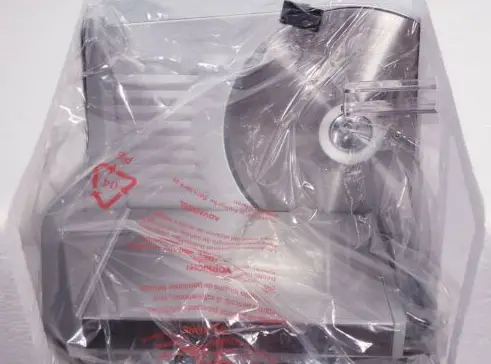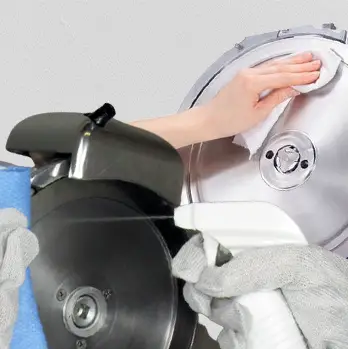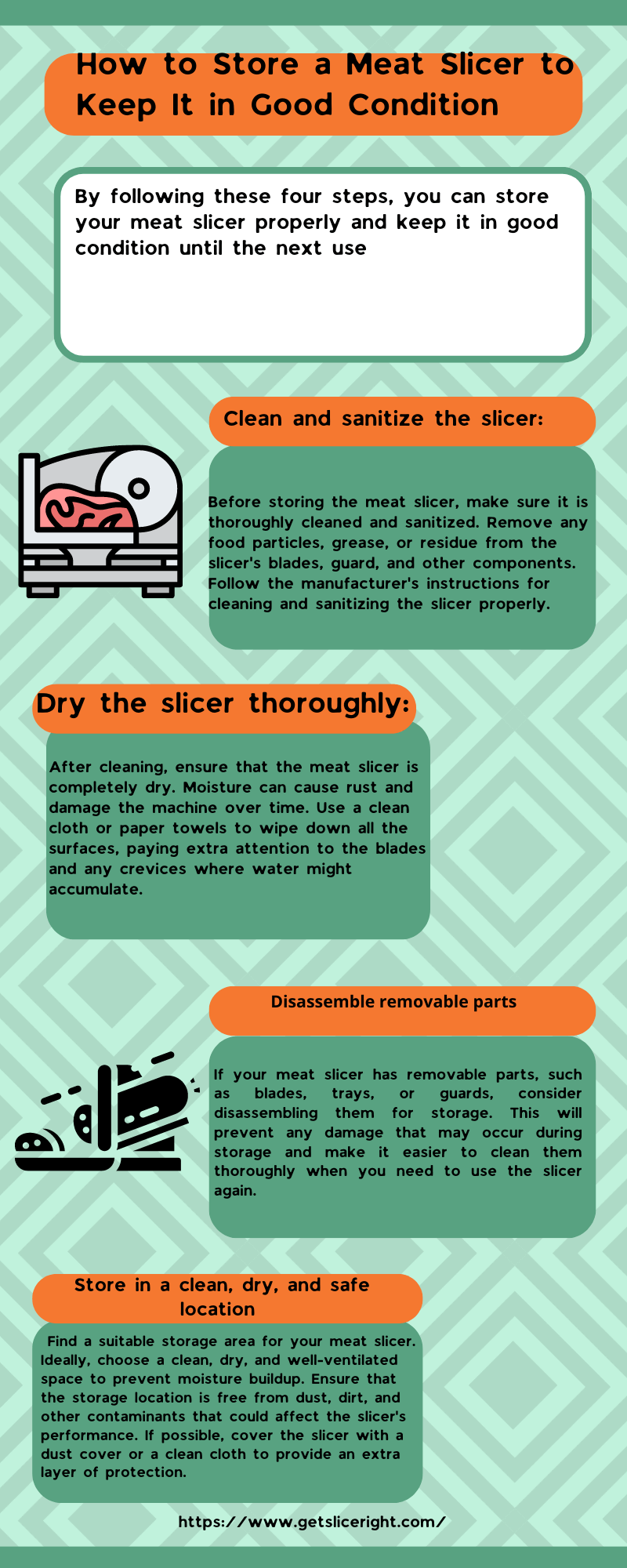A meat slicer is a handy kitchen gadget. It can save a lot of time and energy when it comes to slicing up food into small pieces so you can use them for recipes. Still, they can also be pretty useless if you don’t know how to store your meat slicer properly & you’ll find yourself using a knife and cutting board or asking friends and family for help when cooking. Taking good care of your meat slicer will last long and get more use.
Storing A Meat Slicer To Keep It In Good Condition

You’ve just bought your first meat slicer, and you’re unsure how to take care of it. If this sounds like you, don’t worry, as we are here to help! This guide will show you how to store your meat slicer to keep it in good condition and avoid any unwanted accidents during use.
Bacteria Removal From Meat Slicer
Meats are biodegradable food that quickly causes many forms of bacteria & other microorganisms. Small pieces of meat usually get caught in the blade and the slicing machine of a meat slicer. Cleaning and sanitizing are the key to making sure your meat slicer is free from bacteria & continues to perform well. Any surface that touches food, such as knives, stockpots, cutting boards, and prep tables, must be cleaned and sanitized.
Meat Slicer Cleaning and Sanitization
- After each use, clean your meat slicer and wipe out all dirt, grime, and bits of food from the meat slicer with detergent and hot water. Do not use steel wool or abrasive sponges to clean.
- Don’t let a build-up of hair and other debris cause rust and corrosion. To clean, wipe off all the parts with a wet cloth, make sure the blade shield is correctly attached to the food slicer and can be lifted before each use. Rinse the machine well.
- Sanitize the meat slicer with a simple spray of water or food-safe sanitizer, including the unique food-safe formulations of iodine, chlorine, or quaternary ammonium mixed with water at at least 113-degrees F.
- Allow the sanitizer to dry on the surface & reduce pathogens on a surface to make it durable, smooth stainless steel material.
- CLEAN & SANITIZE the meat slicers at least once every four hours to prevent the growth of disease-causing bacteria.
lubricate The Meat Slicer
CLEAN & SANITIZE the meat slicers
Protecting Meat Slicer From Rust
Suppose you want to store the meat slicer for a more extended time, For extra protection from rust and corrosion, optimum performance & longevity. You can apply a light coat of food-safe oil on sensitive parts of the steel blade, guard, and other related features.
Slicer Blades Protection
It is best not to clean the edge with water because it would damage the smoothness and sharpness of the blades if you clean it with water. The blades should always be kept oiled after washing to prevent oxidization and rusting, which are harmful to the edge.
- DO NOT use mineral oil or vegetable oil to lubricate your meat slicer. Always use a food-safe lubricant with a rating of H1.
- INTERFLON FOOD LUBE is a long-lasting, water- and particle-repelling, & can use on all kinds of food processing equipment.
Proper Storing
Keeping the meat slicer clean and in good condition is easy, but it’s essential not just for hygiene reasons but because extra care during storage will help ensure that it still functions when you first buy it. If you have a meat slicer at home, you are likely aware of the safest way to store it.
Cleaning, Sharpening and Changing the Slicer Blade
Important to Remember while Storing Meat Slicer
- As a parent, your number one priority is to keep your children safe & cover the meat slicer to protect it from airborne dust.
- Ensure that you do not leave the meat slicer out on the countertop, as this causes it to get bumped, leading to damage. If possible, ensure that you store the food slicer in its protective case when not in use.
- The meat slicer will last longer if placed in the dry kitchen area or in a cabinet that doesn’t get wet by water.
- While most have specific storage areas already, a shelf to hold it while not in use is also a good idea. Some don’t, and it’s essential to make sure your blades stay sharp and in good condition.
- When not in use for a long time or when put away for the winter season, store it in a clean place away from food particles, dust, and other air pollutants.
Conclusion:

Meat slicers are some of the most popular kitchen appliances. They make meat cutting super easy, and they come in handy in many different dishes. Though it may seem complex, storing your meat slicer is quite simple. But, knowing how to keep your meat slicer is of the utmost importance to maximize its durability and longevity. Your meat slicer will bring you many good times in the kitchen, but those pleasant times can quickly turn into bad ones if you don’t know how to store them.

Mario Batali is a renowned author, food enthusiast, and passionate chef who has dedicated his life to exploring the world of culinary arts. With a love for sharing his knowledge and experiences, Mario has become a prominent figure in the food blogging community, inspiring countless readers with his creativity and expertise.
In addition to his culinary prowess, Mario Batali is also a talented writer with a flair for engaging storytelling. He launched his own food blog to share his recipes, cooking tips, and personal experiences in the kitchen. Over time, Mario’s blog gained a loyal following of food enthusiasts who appreciate his unique approach to cooking and his dedication to using only the finest ingredients.
Mario Batali’s passion for food and his commitment to sharing his knowledge with others have made him a true inspiration in the world of culinary arts. Through his blog, cookbooks, and public appearances, Mario continues to spread his love of food and the joy of cooking with his ever-growing fanbase.






